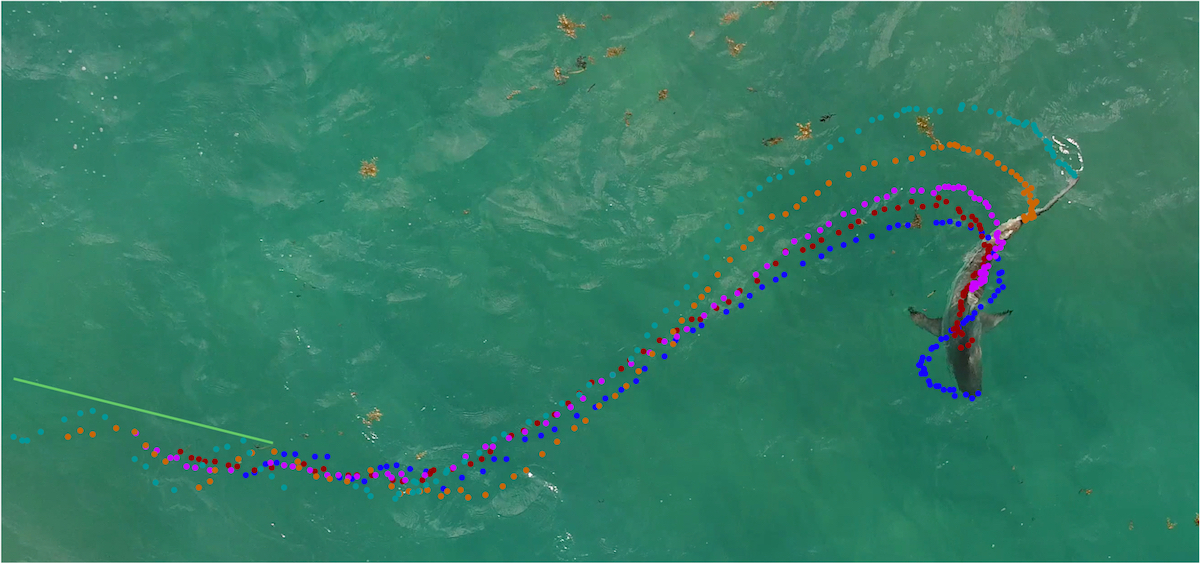
Sharks come in many different shapes and sizes, and they live in almost every part of the ocean. Sharks that live on coral reefs look different from sharks that swim in the open ocean. We are studying how these differences in appearance/form affect the way sharks move. We look at sharks with differently shaped pectoral fins to see how they swim differently. Pectoral fins are like wings . Most sharks use them to swim, but some sharks use them to walk along the ocean floor. These “wings” keep the shark up in the water.
To study how sharks move their bodies, we glue beads onto the shark’s skin. We use the beads to follow the shark’s body in videos. Then, we watch these videos in slow motion to see how different parts of the shark’s body are moving. We compare swimming in many different types of sharks to see if body shape or where they live change the way they swim. By studying the shapes of pectoral fins and the roles they play in different types of sharks, we can understand how sharks move around in different parts of the ocean.

The Florida Atlantic Biomechanics Lab studies the form and function of shark skeletons, which bend side-to-side while they are swimming. Sharks and their relatives (skates and rays) are the only animals alive today with skeletons composed of cartilage and not bone.
While many might think of cartilage as the weak tissue that shapes our ears or nose, the bodies of sharks are far from flimsy. As top predators, they are some of the fastest swimmers in the ocean.
We also use aerial drone technology to study how sharks swim in the wild and compare their swimming patterns when alone versus in groups. This study demonstrates the importance of observing wild movement and the effects of group interactions on swimming.